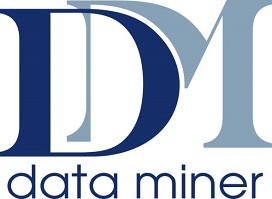Target Audience
This course will teach you advanced-level technical competency of server issues and technology, including installation, configuration, upgrading, maintenance, environment, troubleshooting, and disaster recovery. It will prepare you to take the CompTIA Server+ SK0-004 exam by providing 100% coverage of the objectives and content examples listed on the syllabus.
Course Prerequisites
Ideally, you should have successfully completed gtslearning’s “A+ Certification (for Exams 220-901/902) Official Study Guide” course or have around 1 year of experience of working in IT support. Specifically, it is recommended that you have the following skills and knowledge before starting this course:
- Taken and passed both CompTIA A+ Certification exams or have equivalent knowledge and experience
- Six months to one year of post-A+ Certification support experience
- Extensive experience of supporting end-users and PC-based systems.
Module 1 Server Setup
- Servers and Racks:
Server Hardware and Software • Server Form Factors • Rack Systems • Rack Installation and Safety - Storage Devices:
Mass Storage Drives • The SCSI Interface • Serial Attached SCSI (SAS) • The Serial ATA Interface • Solid State Drives (SSD) - RAID:
Drive Arrays (RAID) • RAID Mirroring and Parity • Nested RAID • Hardware and Software RAID • Enterprise RAID Configurations - System Setup:
BIOS and UEFI Configuration • Upgrading Firmware • MBR and GPT Partitions • File System Choices • Labs • Preparing the Server - Server Operating Systems:
Server Pre-installation Planning • Network Operating Systems • Hardware Compatibility List (HCL) • Installation and Deployment Methods • Driver Installation • Virtual Memory • Labs • Installing an NOS - Troubleshooting Procedures:
Troubleshooting Procedures • Identifying the Problem • Establishing a Probable Cause • Establishing a Plan of Action • Labs • Configuring an NOS
Module 2 Server Networking
- Ethernet:
Twisted Pair Cabling and Connectors • Installing Network Cables • Patch Cable Types • Fiber Optic Cabling and Connectors • Ethernet Standards • Network Adapter Cards • Troubleshooting Cabling - Internet Protocol:
The TCP/IP Suite • Internet Protocol and IP Addressing • Subnet Masks • Configuring IP • Classless Addressing • Troubleshooting IP • IP Version 6 • Labs • Configuring Network Settings - Routers and Firewalls:
IP Routing Basics • Troubleshooting Routing Issues • TCP and UDP Ports • netstat • Zones and Access Control Lists (ACL) • Basic Firewalls • Host-based Firewalls • VLAN Configuration - Network Services:
Network Configuration and Access • Host Names and FQDNs • Domain Name System (DNS) • Configuring DNS Servers • nslookup and nbtstat • Configuring DHCP • NTP Server - Virtualization Services:
Virtualization Basics • Hypervisor • Resource Requirements • Virtual Networks • Purposes of Virtual Machines • Virtualization Best Practices and Risks • Labs • Installing a Linux VM
Module 3 Server Applications
- Configuring Server Roles:
Installing Roles and Applications • Database and Application Servers • Web Servers • File Transfer Services (FTP) • Email (SMTP / POP / IMAP) • Messaging Servers • Troubleshooting Services • Labs • Configuring a DHCP Server - Storage Services:
DAS, NAS, and SAN • Fibre Channel • Tape Drives • Other Storage Media • Storage Capacity Planning - Volume Management:
Disk Management Tool • Adding Arrays (Dynamic Storage) • Drive Status and Disk Tools • Troubleshooting Storage • Troubleshooting RAID • Troubleshooting Disk Performance - Directory Services:
Configuring Directory Services • Active Directory • Managing Users • Managing Group Accounts • Account Policy Enforcement • Labs • Configuring Directory Services - File and Print Services:
Configuring File Shares • NTFS File and Folder Permissions • Securing a Linux File System • Print Servers • Labs • Configuring File Shares - Performance Monitoring:
Server Monitoring • Measuring Performance in Windows • Measuring Performance in Linux • System Logs • Troubleshooting Software Problems • Labs • Monitoring Performance
Module 4 Server Maintenance
- Server Hardware:
Motherboard Components • CPU Features • Packaging and Sockets and Models • CPU Upgrades • Memory • Dual-channel Motherboards • Other Memory Features • Expansion Cards • Labs • Deploying Windows • Upgrading Hardware - Environment and Maintenance:
Developing a Server Management Plan • Server Chassis Features • Performing Shut Down • Server Cooling • Heating, Ventilation, Air Conditioning (HVAC) • Labs • Maintenance Tasks - Power Distribution:
Power • Power Supply Unit • Connector Types and Voltages • Uninterruptible Power Supplies (UPS) • PDUs and Power Circuits - Server Hardware Troubleshooting:
Adding and Removing Components • Troubleshooting Power and POST Problems • Troubleshooting Processor, Memory, and I/O Failure • Performing a Memory Upgrade • Labs • Troubleshooting Scenarios - Server Management:
Server Management Methods • Local Hardware Administration • OS Administration Tools • Network Hardware Administration Tools • Labs • Managing a Server - Configuration Management:
Change and Configuration Management • Documentation • Procedures and Standards
Module 5 Server Security
- Site Security:
Authentication • Designing a Secure Site • Site Security Controls • Hardware Security • Data Encryption • Data Wiping and Disposal • Fire Prevention and Suppression • Labs • Disk Encryption - Remote Access Services:
Digital Security • Remote Access Server - Server Hardening:
Hardening Techniques • Firmware Security • Patch Management • Windows Update • Linux Patch Management • Application Patch Management - Security Software:
Anti-malware Software • Intrusion Detection Systems (IDS) • Endpoint Security • Vulnerability Assessment - Disaster Recovery:
Business Continuity Concepts • Disaster Recovery Planning • IT Contingency Planning • Clusters and Sites -
Backup:
Backup Plans and Policies • Backup Execution and Frequency • Restoring Data and Verifying Backups • Labs • Backup
Auditoriniai mokymai
| Pradžios data | Trukmė, d. | Kurso pavadinimas | Kaina, € | Statusas |
| 2024-02-05 | 5 | CompTIA Security + | € 1,250 | |
| 2024-02-05 | 5 | CompTIA Linux+ | € 1,250 | |
| 2024-02-19 | 5 | CompTIA A+ | € 1,300 | |
| 2024-03-25 | 5 | Kompiuterinių tinklų pagrindai pagal CompTIA Network+ | € 1,300 | |
| 2024-05-20 | 5 | CompTIA Server+ | € 1,300 |

